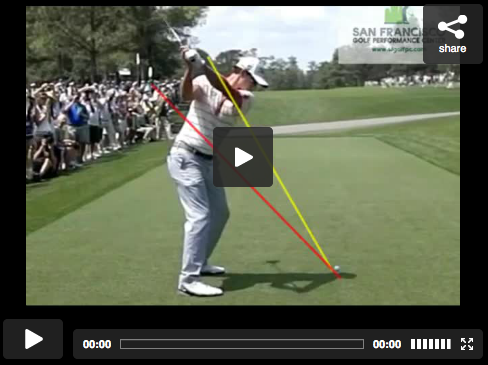By Scott McCormick, GolfNow freelancer
Adam Scott has been one of the world’s top golfers for several years now, but his victory in the 2013 Masters has catapulted the Aussie into household name territory.
The aspect of Scott’s game that has traditionally gotten the most attention is his putting technique, as he uses the controversial long putter to sink clutch putts – which he did in remarkable fashion on the 72nd hole of the Masters and then again two holes later in the playoff against Angel Cabrera. But the 32 year old Scott has improved his overall game considerably in recent years, to the point where his swing is thought by many to be among the most perfect in the sport.
Let’s take an in depth look at Adam Scott’s swing, shall we?
Starting Stance
Having the proper pre-swing setup is perhaps more important than the beauty of the swing – because with improper stance or other setup issues, a great swing will often lead to less-than-sterling results.
Adam Scott starts off with what can only be described as the perfect starting deportment for a golfer. His posture is impeccable, with a perfectly aligned back, flexed knees, and his arms loose and comfortable. His whole body alignment is picture-perfect, with his shoulders, hips, knees and feet all in harmoniously configured.
Back swing
As Adam goes into his back swing, you note the smooth and wide arc he takes with the club, and as he reaches the apex of his swing, his body remains perfectly aligned, with his knees still flexible and his left arm almost straight and the right arm at a 90 degree angle. Many golfers – even professionals have a tendency to either crouch down or straighten up during the back swing, but the perfect swing that Adam employs relies on him keeping his stance uniform with his setup position.
As he rears back, he lets the left, leading shoulder start the chain of events, going across his chest and keeping the clubface square to the target. Meanwhile, his torso begins its rotation, as the wrists become fully set at the top of the backswing.
Down swing
As the business part of the swing – the follow through – is about to be occur, Adam’s body unleashes a textbook coiling motion and in sequence the knees, hips, torso and finally the arms go into motion. This perfectly concordant movement, almost like the gears of the machine, render the body able to exert maximum torque and this power is evident as the body springs the club with tremendous force towards the ball, as the clubhead remains pointed in the proper direction at all times.
Moment of impact
For the first (and only time) in this entire procedure, the arms both become perfectly straight and form triangle just as the clubhead strikes the ball, generating a massive amount of clubhead speed with what appears to be an effortless, strain-free motion.
As the clubhead smashes into the ball, the head remains completely still and the right shoulder rotates from the downswing onward, while the legs transfer the body’s weight from right to left.
Follow through
While a golfer’s follow through is not as important to study as the initial set up, the proper ending pose can be seen as a good indicator that all the correct pieces were in place during the pre-strike phase. Here we see Scott finishing with his arms and club fully wrapped around his neck, and his posture and balance remains firm, with all the weight residing on his left leg.
Conclusion
Simply observing a professional player with a “perfect swing” will not help you improve your golf swing alone, as all of the characteristics of Adam Scott’s swing described above fall directly under the category “easier said than done.”
However, you can try to incorporate some of the fundamentals explained above, particularly those in the setup and early parts of the swing. By observing video of top players and then comparing it to video of your own swing, you’ll slowly be able to integrate those principles into your game. Obviously, tools like Ubersense providing the slow motion video of your swing, coupled with a qualified golf instructor.
Scott McCormick is a golf fanatic and freelance writer whose golf content appears courtesy of discount golf provider GolfNow.com


Reblogged this on Mulligang Golf and commented:
Great analysis of Adam Scott’s swing using iPhone app, Ubersense
Great post. Nice analysis!
Thanks Will, glad you enjoyed it!
Great job,this will help a lot!Thanks!
I have read several just right stuff here. Definitely value bookmarking for revisiting.
I surprise how so much effort you set to make such a wonderful informative web site.